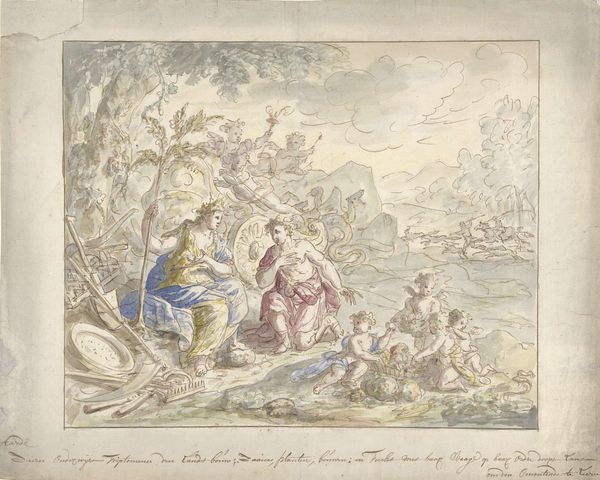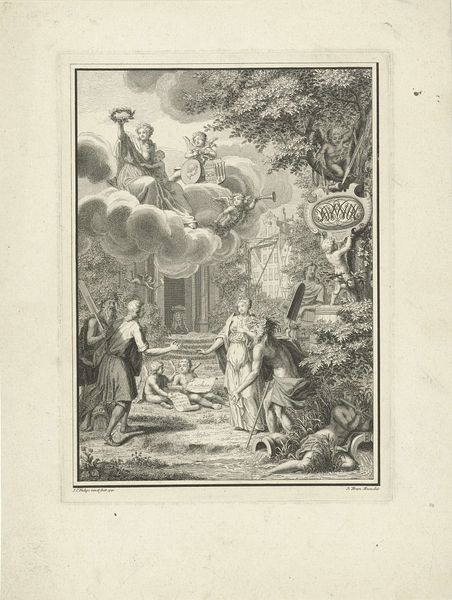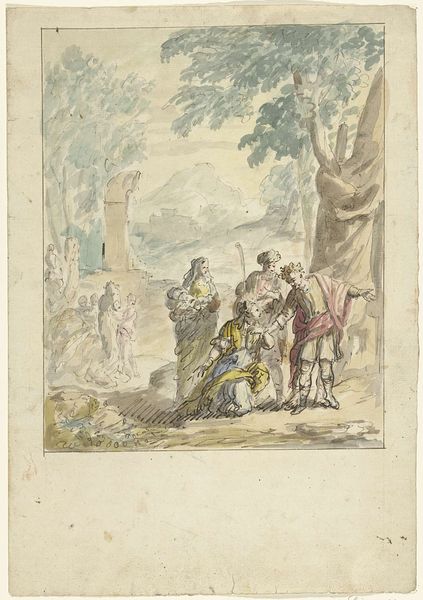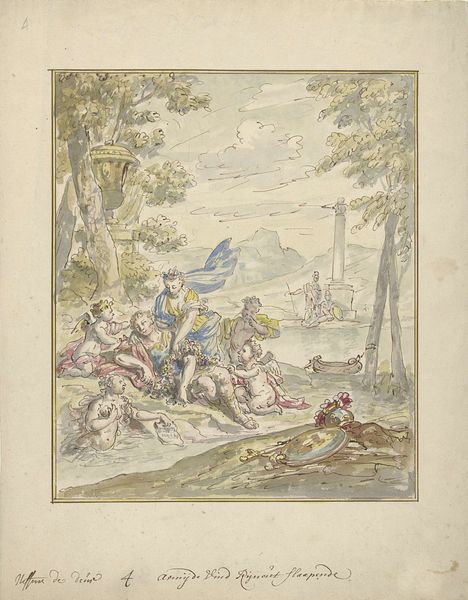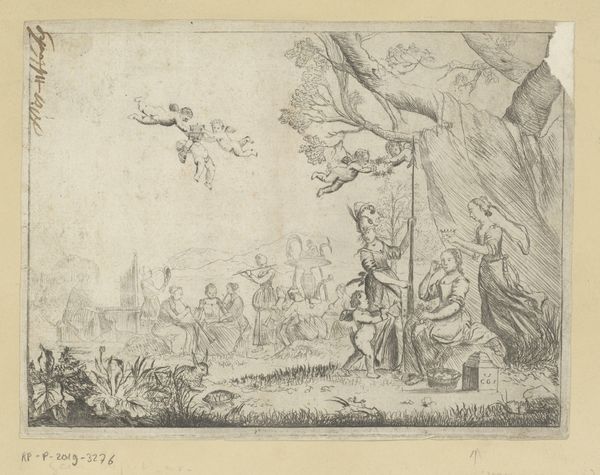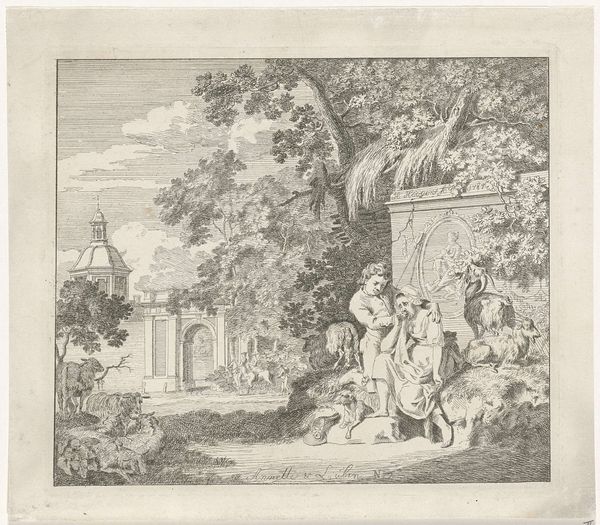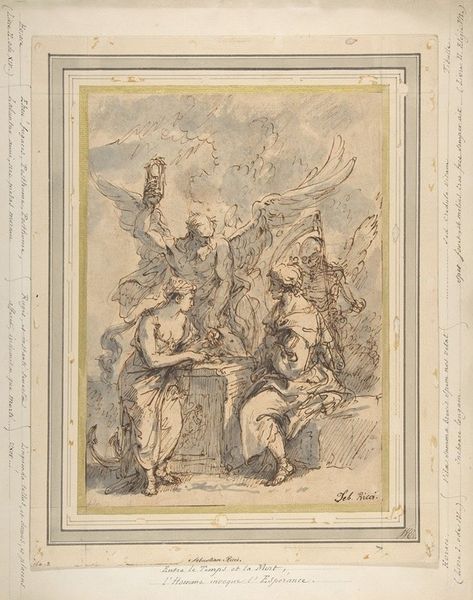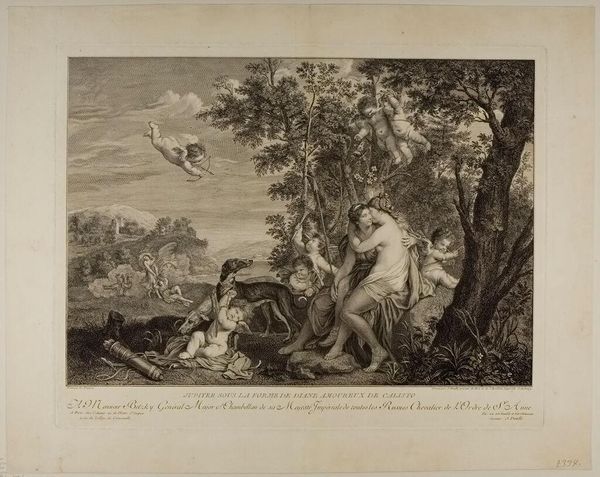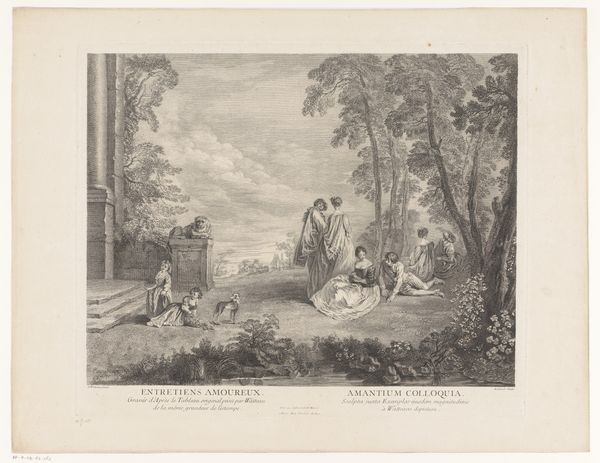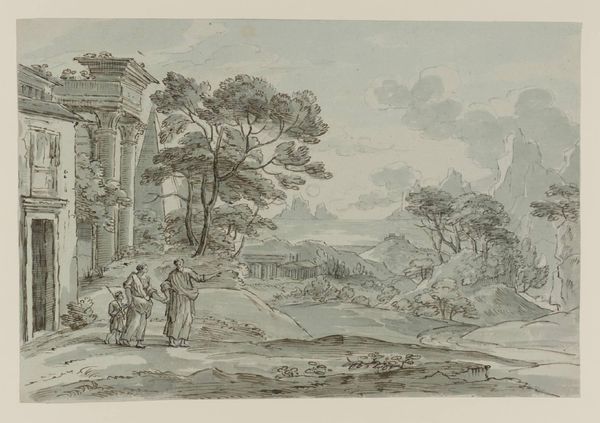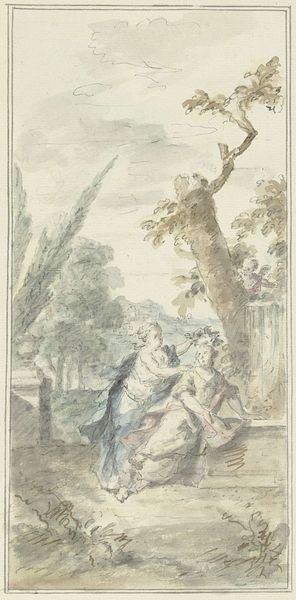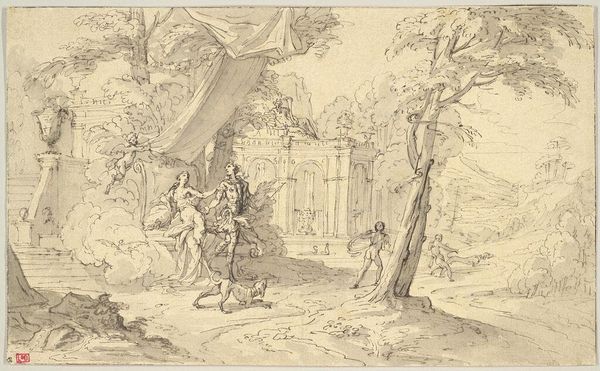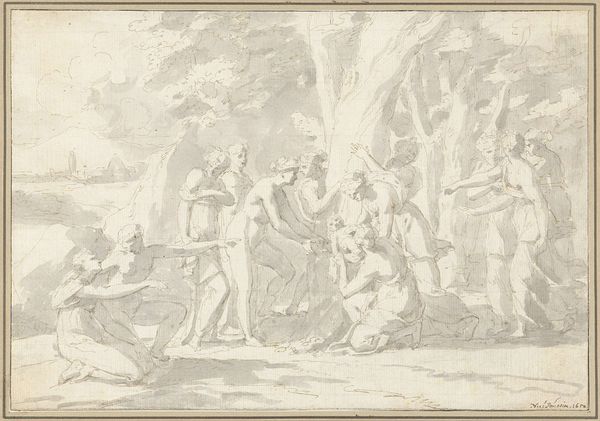
Ontwerp voor een kamerbeschildering met liefdespaar zittend bij fontein 1715 - 1798
0:00
0:00
drawing, paper, pencil
#
pencil drawn
#
drawing
#
allegory
#
pencil sketch
#
landscape
#
figuration
#
paper
#
pencil
#
history-painting
#
rococo
Dimensions: height 420 mm, width 330 mm
Copyright: Rijks Museum: Open Domain
Curator: This preliminary sketch, entitled "Design for a Room Decoration with Lovers Sitting by a Fountain," was crafted using pencil on paper by Dionys van Nijmegen sometime between 1715 and 1798. Editor: Immediately, the sketch strikes me as rather delicate, ethereal almost. The monochromatic rendering softens the implied forms and creates a dreamy ambiance, despite the classical architectural elements. Curator: Rococo certainly lends itself to that sort of atmospheric effect. Note the delicate gradations achieved solely through the variation in pencil pressure. The lines themselves possess an almost calligraphic quality, defining edges while also implying volume through cross-hatching and contour lines. It’s fascinating how van Nijmegen articulates depth using such minimal means. Editor: Absolutely, and I see it's infused with a deep sense of allegorical significance, focusing as it does on a love scene adjacent to Cupid; look at those embracing figures beside what seems to be a public fountain, recalling the traditions of courtly love. This speaks to both individual love and collective social meaning. Curator: Precisely, the architectural backdrop, fragmented and softened as it is, functions almost as a stage set. The various figures, both sculpted and living, seem carefully arranged within this shallow pictorial space to lead the viewer’s eye. Notice how the receding planes of the fountain and the suggestion of a landscape beyond add structural complexity. Editor: And while you focus on the set itself, I return to those sculptures. What stories do you think are intentionally echoed within the scene that create connections, adding layers of association between the love represented and history? Perhaps a conversation with ancestors, gods, and those we have lost? Curator: Perhaps, though for me, it’s the subtle tension between the depicted reality and the artist's process that's compelling. It exposes its constructedness and invites consideration of the artist’s intent in arranging form. Editor: I see more than a formal study; I see echoes of human narratives, a world that speaks to the heart even centuries later. The universality of its theme elevates it beyond a mere sketch. Curator: Indeed. By considering van Nijmegen’s delicate compositional choices, we gain insight into both the rococo aesthetic and the foundations of the artistic intention of design for space and content.
Comments
No comments
Be the first to comment and join the conversation on the ultimate creative platform.
